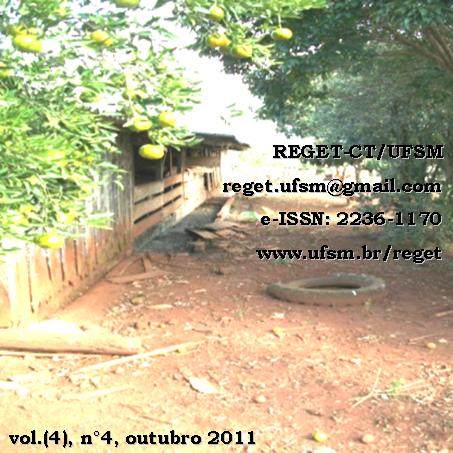ANALYSIS AND STRUCTURING THE COMPOSITION OF THE GARDEN OF EDUCATION FIELD OF SANTA MARIA (CISM) FOR LOCAL COMMUNITY
DOI:
https://doi.org/10.5902/223611703891Keywords:
landscaping, environmental education, native flora.Abstract
The Education Field of Santa Maria (CISM) is a private Army area, located in the district of SaintValentine and currently used for conducting military maneuvers and eventually serving as a placeto community visitation. At this place, there are fragments of native vegetation, as well asspecimens of this flowering composes the CISM surrounding landscape. This flora is preserved inpart due to lack of users awareness. This study aims to propose a planning and landscaping designwithin the precepts of environmental education techniques. According to the observations and evaluations, it was observed that the tropical garden composition is the most appropriated, sincethe most present species are used in these compositions. In this sense, the place was visited andthe photographic recording of the species, such as its correct identification and variables ofdendrometric interest surveys, were accomplished. Through environmental education techniques,it is possible to suggest a landscaping composition suitable for the existing species andarchitectural elements
Downloads
References
APG II. 2003. An update of the Angiosperm Phylogeny Group classification for the orders and families of flowering plants: APG II. Botanical Journal of the Linnean Society 141: 399–436.
BUSARELLO, O. Planejamento urbano e arborização. In: ENCONTRO NACIONAL SOBRE ARBORIZAÇÃO URBANA, 3.,Curitiba, 1990. Anais. P.54-59.
EMPRESA BRASILEIRA DE PESQUISA AGROPECUÁRIA - EMBRAPA. Centro Nacional de Pesquisa de Solos. Sistema brasileiro de classificação de solos. 2.ed. Rio de Janeiro, 2006. 306p.
GREY, G.; DENEKE, F. J. Urban forestry. New York: Wiley, 1978. 279p.
HERRMANN, M. L. de P.; ROSA, R. de. O Relevo. In: IBGE. Geografia do Brasil: região sul. Rio de Janeiro, 1990. p. 55-84.
JACOBI, P. Educação Ambietal, cidadania e sustentabilidade. Cadernos de Pesquisa, n.118, p.189-205, 2003.
KAUL, P. F. T. Geologia. In: IBGE. Geografia do Brasil: região sul. Rio de Janeiro, 1990. p. 29-54.
LAYRARGUES, P.P. Identidades da educação ambiental brasileira. Brasília, BR. MMA, 156p. 2004.
MILANO, M.S. Avaliação Quali-quantitativa e Manejo da Arborização Urbana: exemplo de Maringá – PR. Curitiba, 1988. 120 p. Tese (Doutorado) – Universidade do Paraná.
PECCIOLI FILHO, R. C. Planejamento da paisagem na bacia hidrográfica do rio Palmital - RMC/PR: delimitação de unidades de paisagem como suporte ao planejamento urbano. 115 p. Dissertação (Mestrado em Geografia) – Departamento de Geografia, UFPR, Curitiba, 2005.
PHILIPPI JR, A.; PELICIONI, M.C.F. Educação ambiental e sustentabilidade. Barueri, SP: Manole, 878.p, 2005.
PIOVESAN, G. PAZ, A. L. G., RIBEIRO, T. C.; MORAIS, A. B. B. Borboletas (Lepidoptera: Papilionoidea) de uma área de campo do bioma Pampa, Santa Maria, Rio Grande do Sul, Brasil. Anais do IX Congresso de Ecologia do Brasil, 13 a 17 de Setembro de 2009, São Lourenço – MG.
SANTOS, N. R. Z. dos; TEIXEIRA, I. F. Arborização de vias públicas: Ambiente x Vegetação. Santa Cruz do Sul: Palotti, 2001. p.135.





